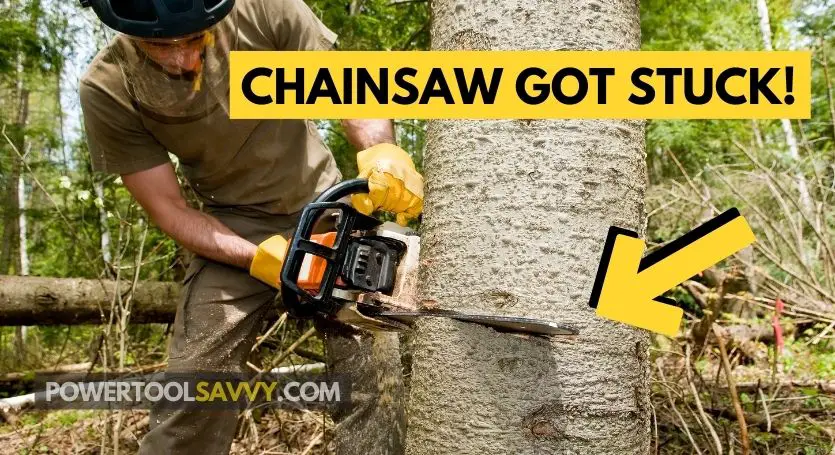
Here are 3 QUICK methods to free a stuck chainsaw:
Place a wedge between the cut and gently tap it to create a gap. This releases the pressure on your chainsaw, making it easier to remove.
Use a jack to lift the sagging log that’s causing the pinch. This relieves the pressure on the chainsaw, allowing you to pull it out.
Try cutting the log from the side using a second chainsaw. This reduces the pressure on the stuck chainsaw and makes it easier to free it.
In this article, I’m going to break down each of these methods in detail.
Are you ready??
Let’s get started!
Table of Contents
ToggleHow to Get a Pinched Chainsaw Out?
It can be really frustrating, right?
You’re in the middle of your work, and suddenly, your chainsaw gets stuck in the tree.
Here are 4 easy methods to free your stuck chainsaw:
Method 1 - Using Felling Wedges
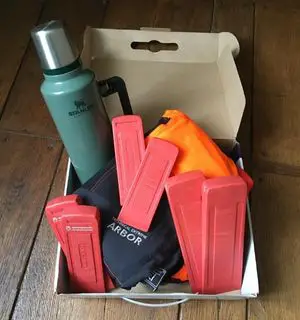
A few days ago, I posted on our Facebook Community asking the members what’s their favorite method for freeing a stuck chainsaw.
More than 73% of the users recommended using wedges!
Using wedges is probably the easiest way to get a stuck chainsaw out. They help reduce the pressure on your chainsaw by creating an opening between the kerf.
Here’s all you need: 2-3 plastic or wooden wedges and a hammer.
Now follow the steps below to get your chainsaw out:
#1. First, identify where the blade of the chainsaw is pinched.
#2. Take one felling wedge & insert it into the cut made by the chainsaw
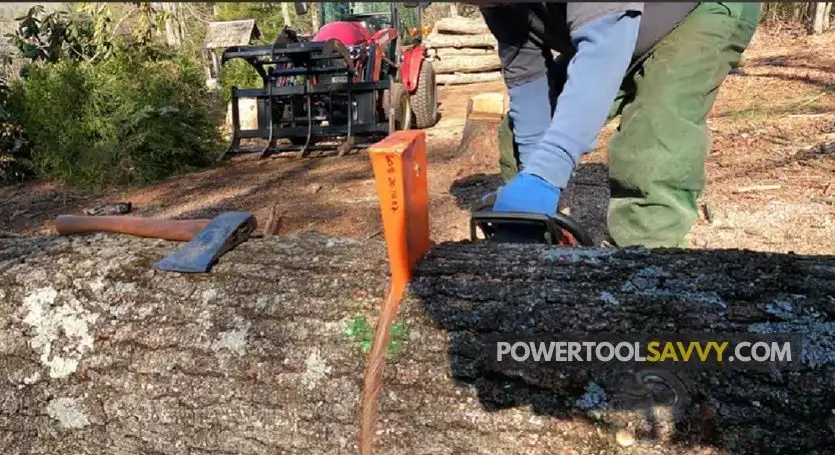
#3. Tap the wedge with a hammer until you create an opening between the tree & the saw.
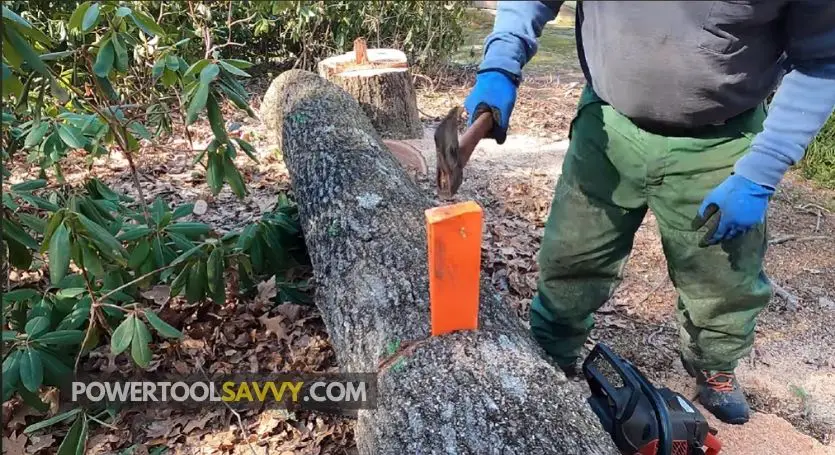
#4. Once you feel there’s enough space, pull the chainsaw out slowly & carefully.
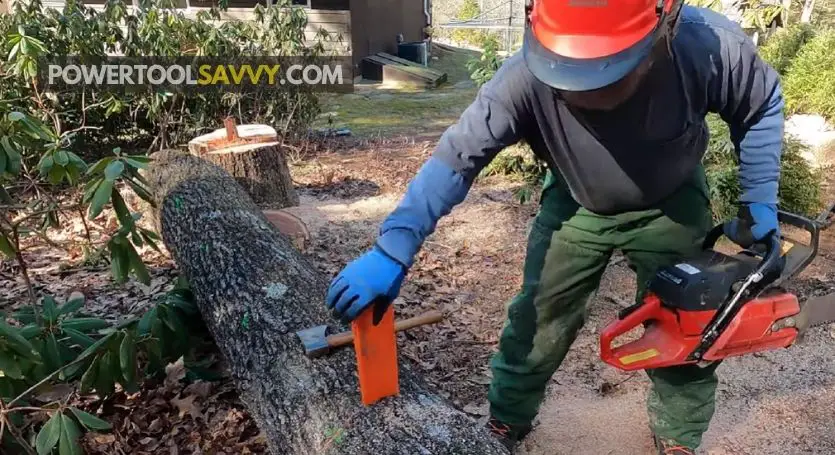
Method 2 - Using a Jack
Forgot to bring your wedges?
No problemo!
You can still get your stuck chainsaw out using a jack.
When you’re cutting a log downwards, the upper part of the log can apply pressure on the saw bar, causing it to get stuck.
In such situations, a jack can be quite helpful. It can lift the log, relieving the pressure on the saw and making it easier to remove.
✍️ Note: This method only works when the tree/log is on the ground!
Here’s how you do it: 👇
#1. First off, find a good quality jack.
#2. Position the jack as close as possible to the log where the chainsaw is pinched. (Make sure the base of the jack is steady & secure to prevent any accidents!)
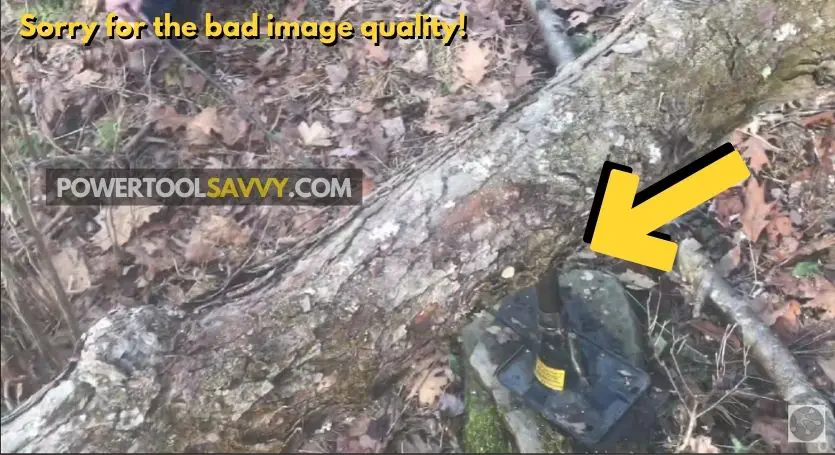
#3. Slowly start to lift the jack. As the log lifts, it should release the pressure on the chainsaw. (Be careful not to rush this process!)
#4. When the chainsaw is totally free, pull it out.
You can use any kind of jack for this method, whether it’s a floor jack, scissor jack, or a bottle jack (whatever you have available).
Don’t have a jack?
You can also use a spud bar, a long wooden pole, or even a piece of log to lift the sagging log and relieve the pressure from the chainsaw.
Method 3 - Using a Second Chainsaw
I often get asked, “Why do you always carry around two chainsaws in your truck?“
The thing is, you don’t always need two chainsaws, but having a spare one can be a lifesaver in emergencies!
For example, when my chainsaw gets stuck in a tree, and I can’t find my wedges or jack, having a second chainsaw is a game-changer.
I use the second one to cut the tree around the stuck one, which relieves the pressure and allows me to remove it without trouble.
The BEST part?
This method can be used on both standing & lying trees!
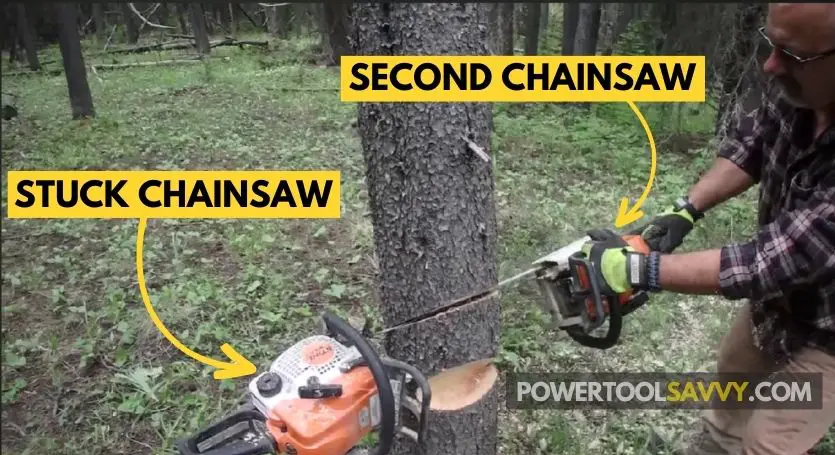
But what about safety?
Well, I’ve to be honest with you – this method is NOT as safe as the previous two.
It demands special skills & a lot of caution. And there’s a risk that you might damage both of your chainsaws in the process.
So you have to be extra careful while attempting it.
That’s why I strongly advise trying the other methods before resorting to this one.
How to Stop a Chainsaw from Pinching?
As they say, “an ounce of prevention is worth a pound of cure.“
It means that you should take steps to prevent your chainsaw from getting stuck in the first place. It can save you time, money, and frustration down the road.
Here are 4 tips to help you avoid getting your chainsaw stuck. 👇
Always Try to Use Wedges When Cutting
Wedges work like “miracle” when it comes to cutting large logs without your chainsaw getting stuck.
After you’ve cut about one-third of the log’s diameter, insert a wedge into the cut and gently tap it down with a hammer. This will stop the log from pinching your saw.
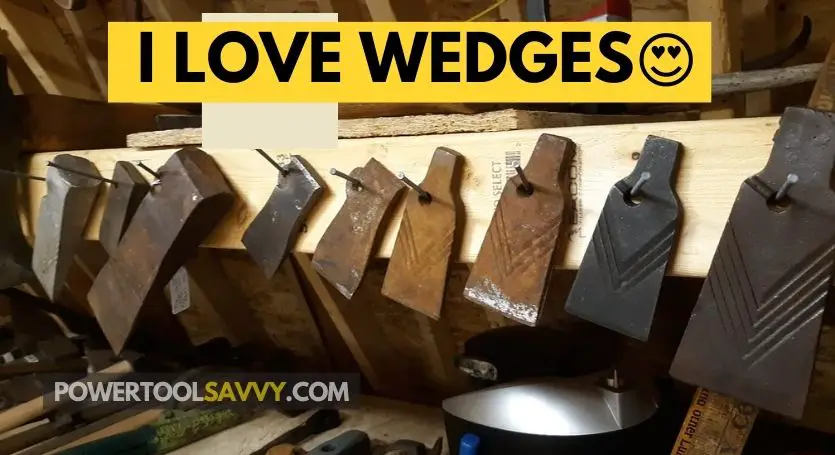
Finch (one of our group members) shared this –
“I always keep a few plastic felling wedges in my back pocket for once I start bucking up the tree. Easy to tap one into the kerf/cut with your hand after your bar & chain have cleared. That will keep the top from closing up and pinching the bar.
Good luck in the future.”
Identify the Compression & Tension Zone
The compression zone is the part of a log where the wood fibers are densely packed, making it more likely for your chainsaw to get stuck.
On the other hand, the tension zone is where the wood fibers are under tension, and it’s usually easier to cut through.
But how do you know where the compression zone is?
If the log is supported on both ends, the center top portion of the log is the compression zone, while the center bottom portion is the tension zone.
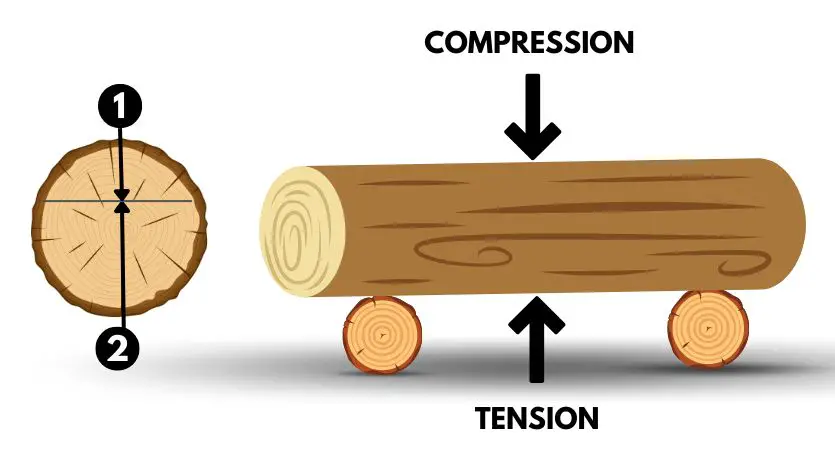
In this case, you should start your cut from the compression zone but make sure you don’t cut too deep (I recommend going about one-third of the log’s diameter).
Then, you should FINISH the cut in the tension zone. This will prevent your saw from getting stuck.
What about a log that’s supported on one end?
If the log is supported on only ONE end, the top side of the log is in tension & the bottom is in compression.
In this case, you should begin your cut from the bottom but avoid cutting deeper than one-third of the diameter.
Then complete the cut with the usual top-down approach!
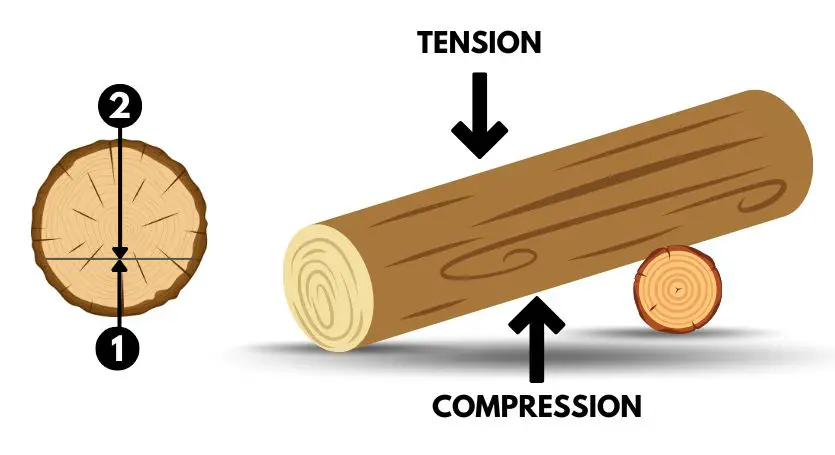
The more you cut, the better you get at this.
For more info on this topic, I would recommend reading this article published by Husqvarna.
Support Your Log Before You Start Cutting
When you do this, you have a better understanding of how the log’s weight is distributed, making it easier to identify the compression & tension zones. (It also helps you cut straight!)
You can use various items like stones or large chunks of wood to support the log.
Additionally, log supports or sawhorses can be used to securely hold the log in place (which is especially useful when dealing with large logs).
Use a Powerful Chainsaw for Thicker Logs
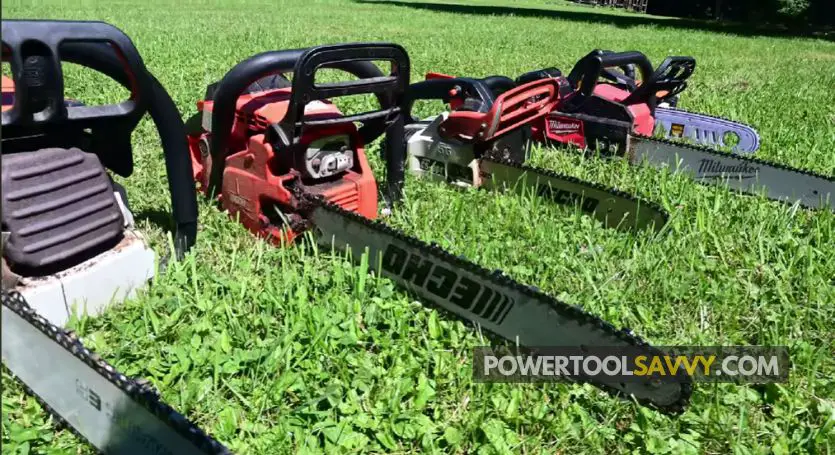
Let’s face it:
Not all chainsaws are the same.
Some are made for light tasks, while some are good for heavy-duty works.
So, if you want to cut thicker logs without getting your saw pinched, it’s best to use a chainsaw that’s made for this!
This will save you time, energy, and effort.
Mistakes You Need to Avoid
Getting your chainsaw STUCK is not the end of the world, but there are some mistakes people make that worsen the situation.
First of all, “panicking” & pulling the chainsaw out with its FULL strength!

Yes, it’s a very common mistake, and it can cause serious damage to your saw. The wood fibers can stick to the chain, and it’ll be hard to get them off.
Another mistake is not taking proper safety precautions while trying to get their chainsaw out.
Always remember to wear protective gear (at least gloves & goggles) before you attempt any of the methods.
A few more common mistakes that people make include –
- Rolling the log while trying to get the chainsaw out,
- Not supporting the log properly,
- Twisting the chainsaw while pulling it out, etc.

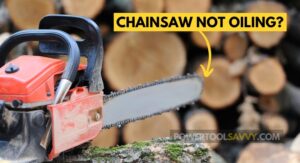

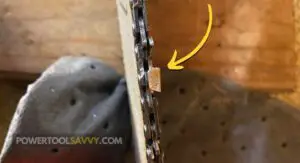
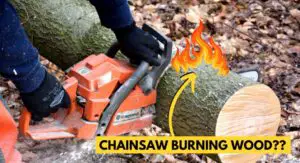

Pingback: Chainsaw Chain Got Stuck in the Bar? Here's How to FIX It!
Pingback: How Long Does a Chainsaw Bar Last & When to Replace It
Pingback: Chainsaw Not Oiling the Chain and Bar? Here're 5 EASY Fixes!
Pingback: Chainsaw Cutting Crooked? Here's How to Get Straight Cuts!